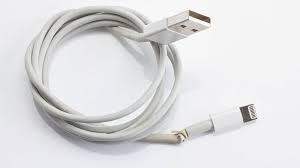Polymer clay has become an increasingly popular material for making items of jewellery. Its versatility probably accounts for its popularity, as it can be easily shaped into a wide range of jewellery styles, eye-catching designs and patterns.
What is polymer clay?
According to polymer clay expert website polyclay.com , polymer clay is a non-toxic, synthetic, acrylic art modelling material. It is made from polyvinyl chloride, pigments or dyes that keep it soft until it is heated when it hardens. Polymer clay is a generic term for clay that is baked to make it harden. Once hardened, the clay does not soften again. There are various brands of clay that fall under this category, such as Fimo, Premo and Kato. These all share the same purpose of making jewellery, but require different temperatures and baking conditions.
What makes polymer clay so popular?
Experts Polymerclay web believe polymer clay has become a popular material for jewellery making because it can be shaped and reshaped a multitude of times without deterioration. If stored correctly, it can still be used even after a number of years. Polymer clay is also easy for anyone to use at home, it does not need to be fired in a kiln and can simply be hardened using a conventional oven. Polymer clay is incredibly durable, versatile and is relatively straightforward to make. It can be used to resemble almost any other jewellery material and can be combined with other jewellery supplies. With the aid of a few tools, it can easily be shaped into any object and is available in a wide range of colours.
What you can do with polymer clay
Polymer clay has a wide range of uses, from buttons, masks, furniture items, sculptures to dolls and vases. It is most commonly used for making jewellery, particularly bead making, as it is a more durable material than glass. Polymer clay makes beautiful pendants of all shapes, sizes and designs. Once you have your room or garage space ready and prepared to make the clay pieces consider storage solutions from garage shelving as you will need somewhere for them to sit after they are ready to be decorated. Once you have completed the product, perhaps take some photos of them to share on social media. Why not create your own Santa ornament? It is a good idea to think about garage shelving for your items because it is easy to organise them into size or price.
Where you can buy polymer clay
Have a look online to see what is available and make use of blogs or websites for inspirational ideas on the type of jewellery you can make using this material. As well as buying the clay, you might want to get hold of some tools to help shape and mould patterns, especially as your jewellery-making skills become more advanced.
How the jewellery is made
There are just a handful of processes involved with making jewellery using polymer clay. Firstly, it needs to be conditioned to soften the clay, which can be done by kneading it and flattening it. A pasta machine or rolling machine can be used to condition the clay. It can also be blended with different colours during the conditioning process. Once it is easy to work with, the clay can be formed and shaped. Many tools are available to add creativity to your project. The clay then needs to be cured, or hardened on parchment paper, for up to one hour at no more than 265F. Once cooled, it can then be finished using jewellery items, sanding or polishing.
















+ There are no comments
Add yours